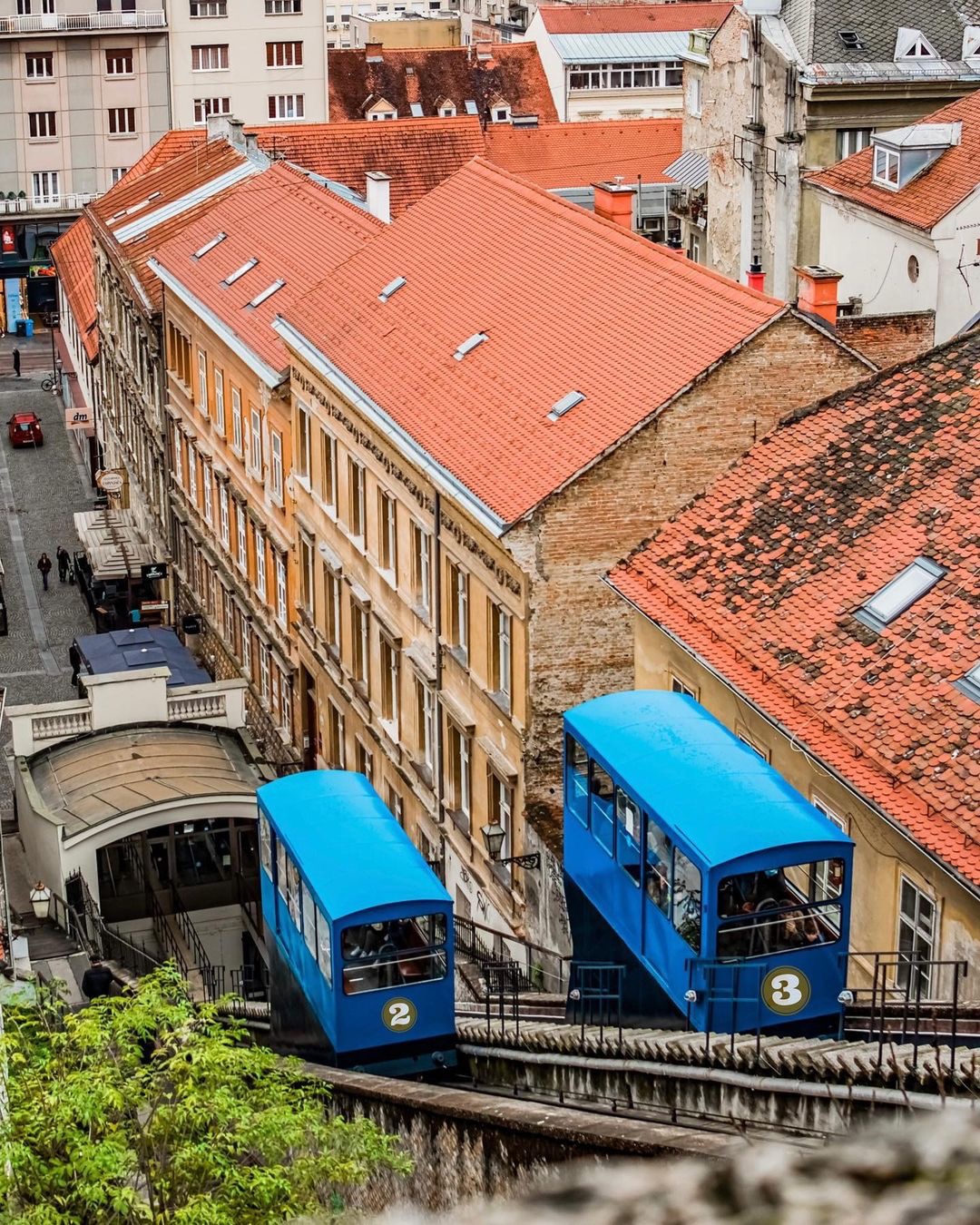
Zagreb, the vibrant capital of Croatia, situated between the slopes of Mount Medvednica and the banks of the Sava River is an enchanting medieval town, filled with cobblestone streets, charming squares, and splendid architecture. The city is also full of interesting museums, including the delicious Museum of Chocolate and stunning natural parks and viewpoints. Whether you seek a historical exploration, or simply a relaxing getaway, Zagreb is a captivating city that promises an unforgettable holiday experience. Have a look at our ultimate 2-day guide!
Day 1
Upper Town
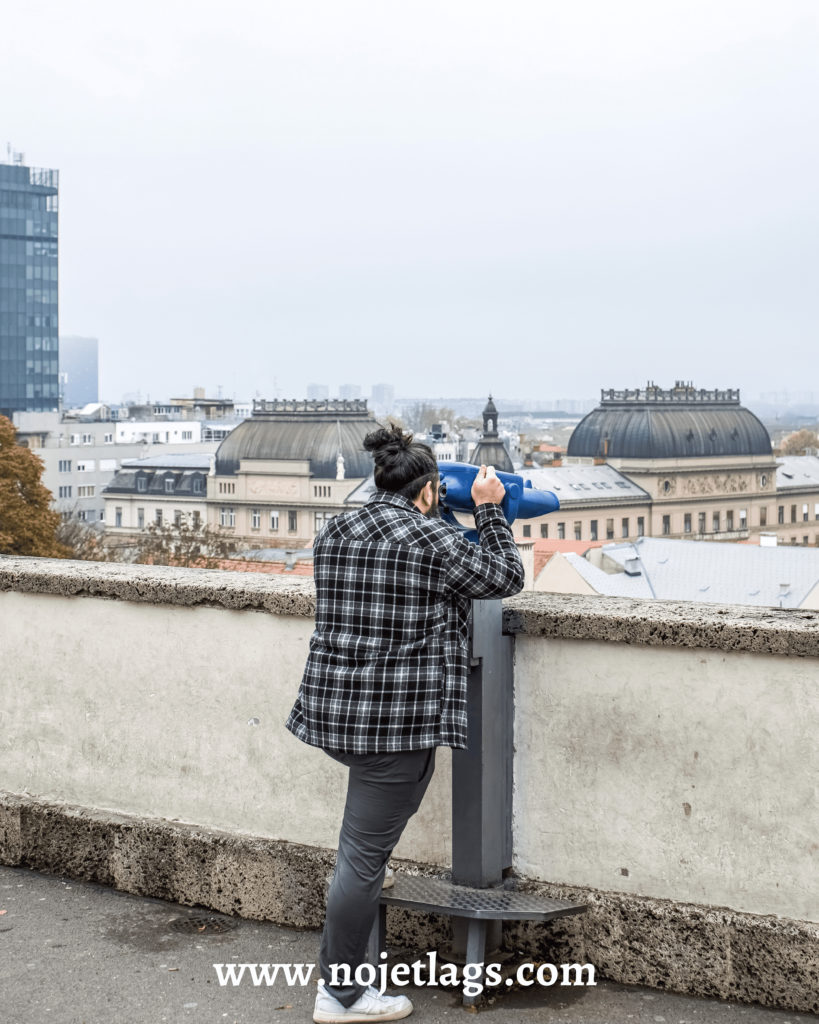
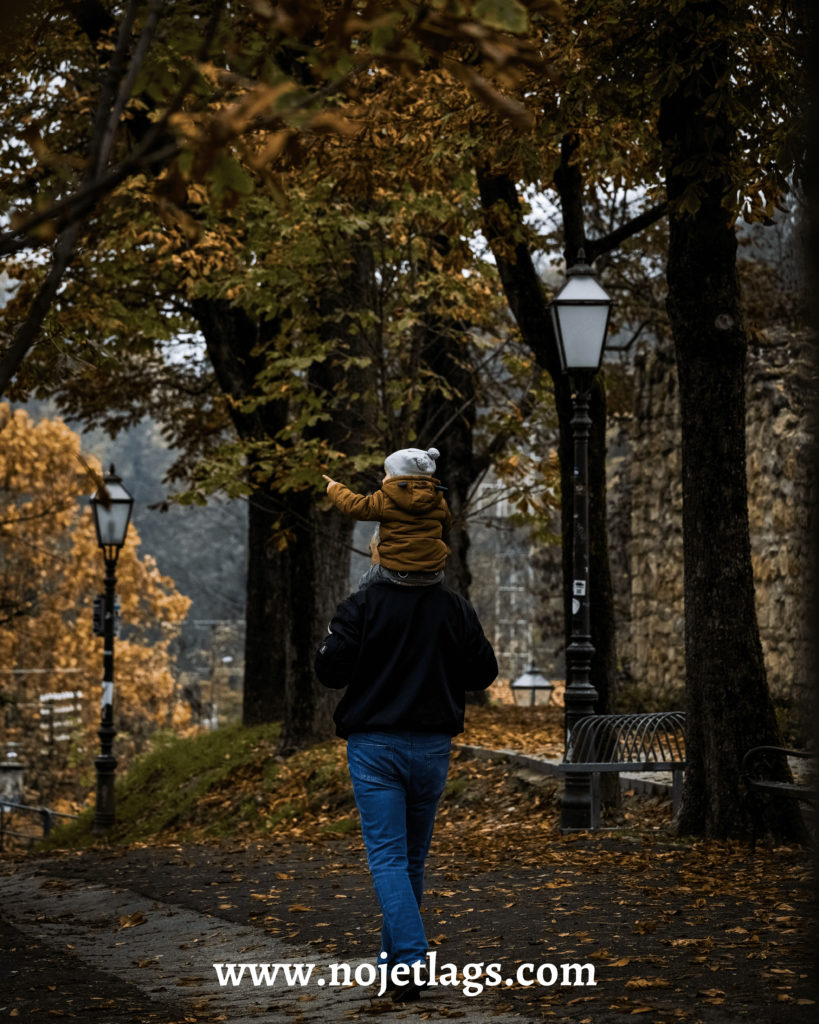
Zagreb’s Upper Town, also known as Gornji Grad, is a captivating journey into the city’s rich historical tapestry. Built atop a hill overlooking the lower city, this enchanting quarter transports visitors through time with its cobbled streets, medieval architecture, and quaint squares. Walking through the Upper Town’s narrow alleys, one encounters charming cafes, art galleries, and small boutiques, each contributing to the area’s intimate and artistic ambiance.
Zagreb’s Funicular
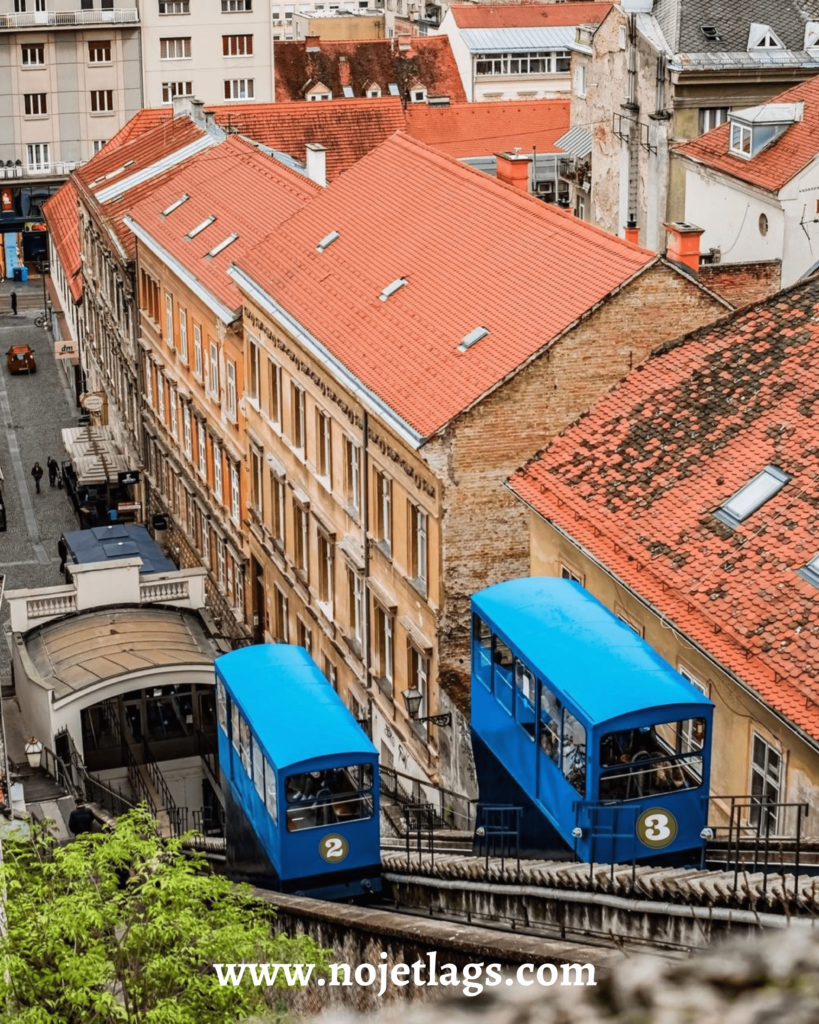
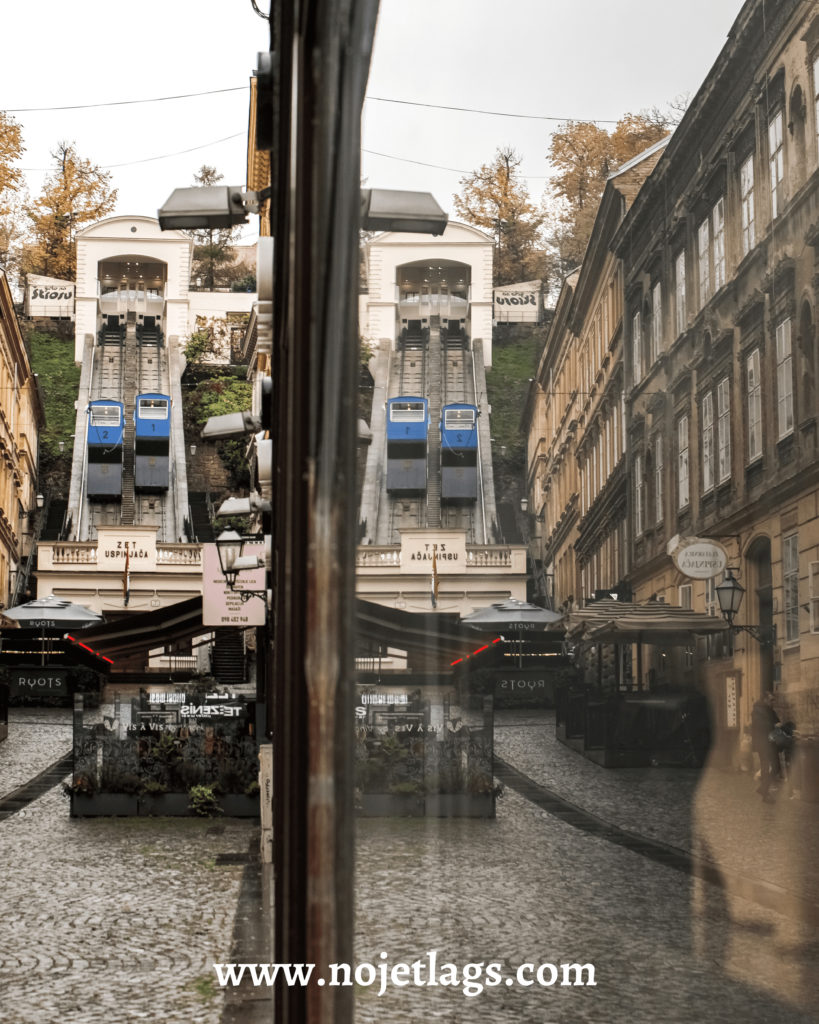
Zagreb’s funicular, a charming link between the Upper and Lower Towns, is a testament to the city’s blend of practicality and whimsy. Known as the “Uspinjača,” this short but delightful railway offers a quick and convenient ascent or descent, saving locals and visitors alike from navigating the steep slope on foot. Moreover, dating back to the late 19th century, it holds the distinction of being one of the world’s shortest public funiculars. The journey itself is a delightful experience, offering panoramic glimpses of the cityscape.
Lotrščak Tower
Zagreb’s Lotrščak Tower, located on the city’s Upper Town, exudes a captivating aura of history and charm. Dating back to the 13th century, this iconic structure once served as part of the city’s defensive fortifications, offering a vantage point to guard the city against intruders. Today, it stands as a historical monument and a venerated symbol of Zagreb’s resilience. Furthermore, the tower’s most renowned feature is its Grič Cannon, which fires a single shot daily at noon, a tradition that echoes across the city and resonates with locals and visitors alike.
Stone Gate
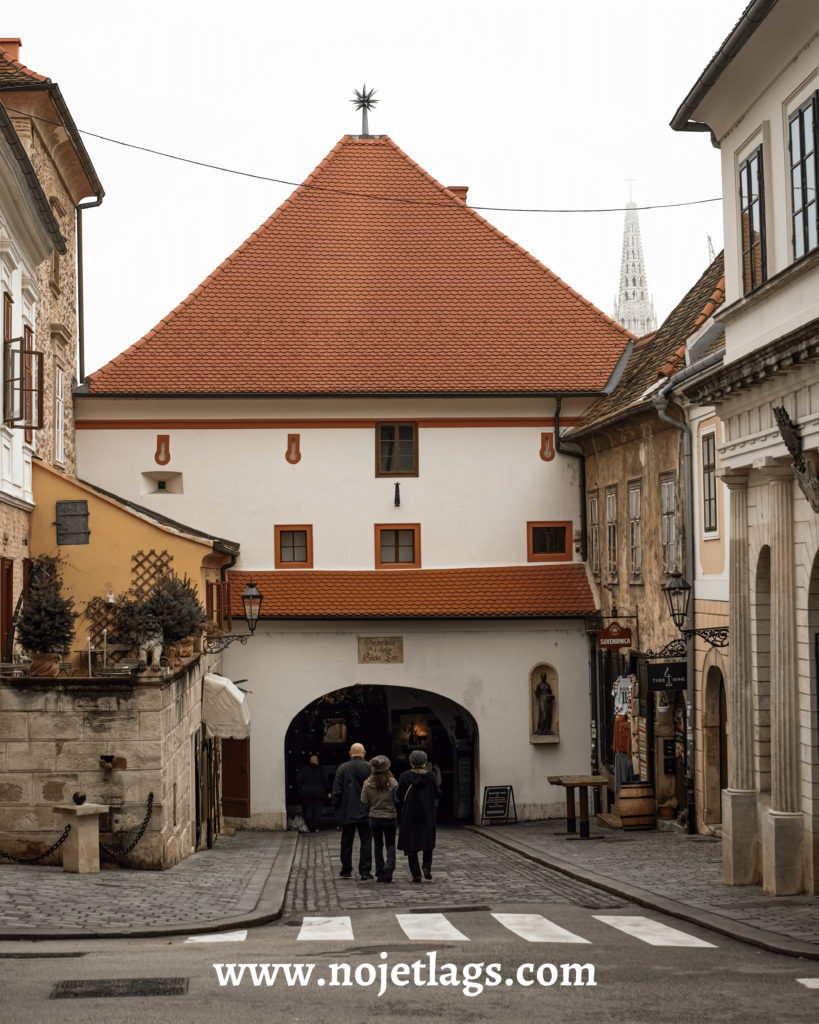
Zagreb’s Stone Gate, a venerable structure that transcends time, stands as a revered symbol of spiritual reverence and unwavering faith. This historical gateway, the only preserved entrance to the medieval fortified town, has endured centuries of transformation while retaining its profound significance. Additionally, the Stone Gate’s chapel, dedicated to the Virgin Mary, is a sanctuary where visitors light candles and offer prayers, creating an atmosphere of solemn contemplation and solace.
St. Mark’s Church
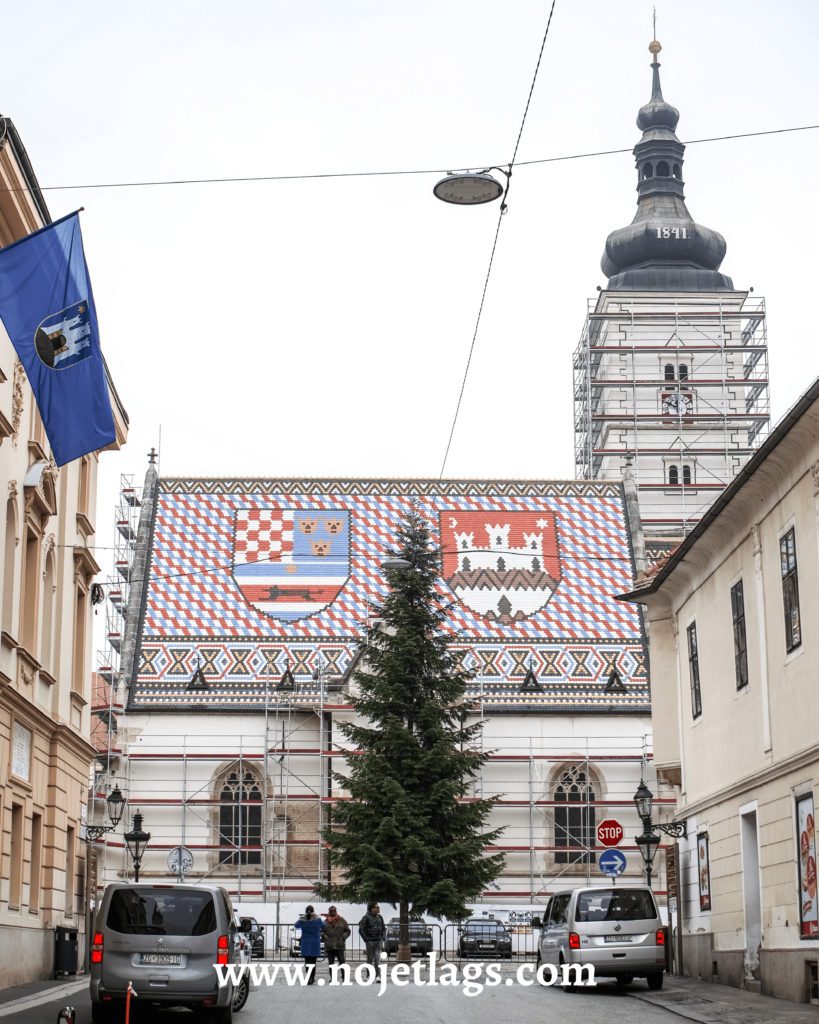
Zagreb’s St. Mark’s Church, an exquisite masterpiece located at the Upper Town, is a living canvas that narrates Croatia’s intricate history and artistic prowess. Its distinctive roof, adorned with intricate multicolored tiles displaying the medieval coats of arms of Croatia, Dalmatia, and Slavonia, is an immediate visual marvel. The church’s Gothic and Romanesque architecture showcases an array of sculpted details and decorative elements, capturing the eye and imagination of every beholder.
Tkalciceva Street
Zagreb’s Tkalciceva Street, a lively and picturesque thoroughfare, beckons locals and visitors with its vibrant energy and charming ambiance. Lined with a diverse array of cafes, eateries, boutiques, and artistic havens, Tkalciceva is a vibrant hub that encapsulates the city’s modern spirit while retaining a touch of old-world charm. This bustling pedestrian street, flanked by colorful facades and adorned with street art, invites strollers to savor the rich tapestry of Zagreb’s urban life.
Enjoying our Bucharest Guide? Take a look at our Rome Guide!
Day 2
Lower Town
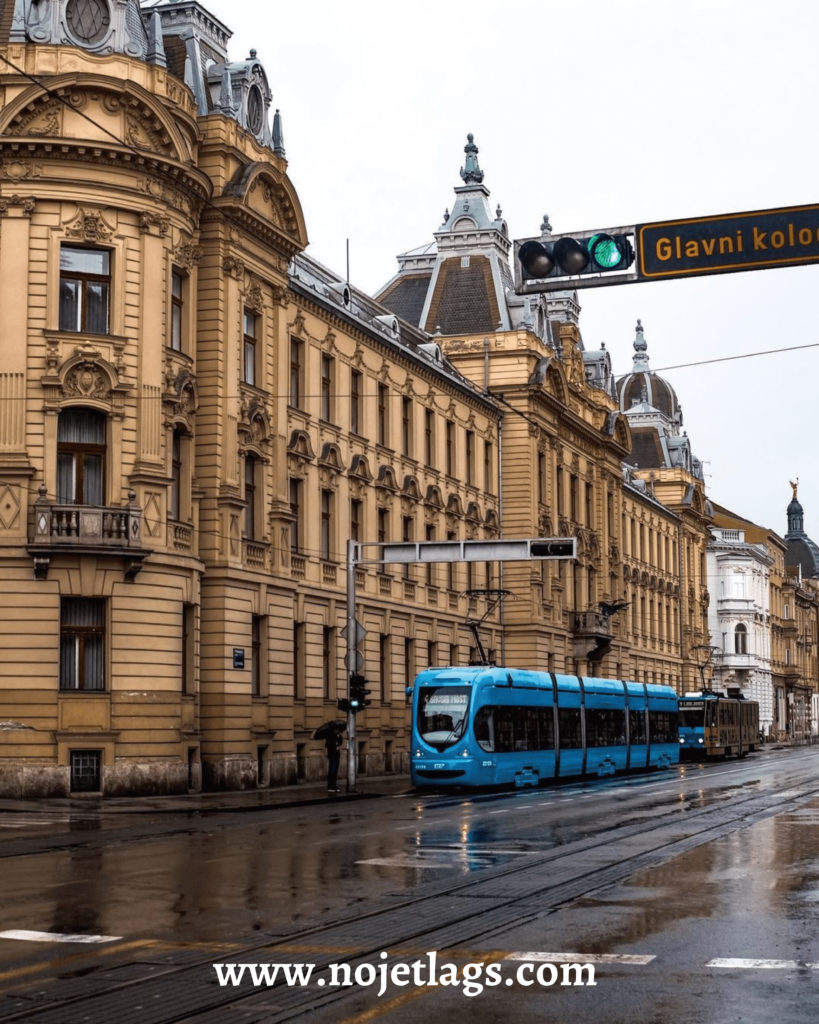
Zagreb’s Lower Town, a dynamic and bustling urban expanse, forms the vibrant core of the city’s modern life and cultural pulse. Stretching from the bustling Ban Jelačić Square to the peaceful greenery of Zrinjevac Park, this district showcases a captivating fusion of historical elegance and contemporary dynamism. Its wide avenues, lined with shops, cafes, and architectural gems, invite exploration and immersion into the city’s eclectic offerings. Furthermore, museums, theaters, and galleries dot the landscape, embracing the Lower Town with a creative fervor that invites cultural enrichment.
Ban Jelacic Square
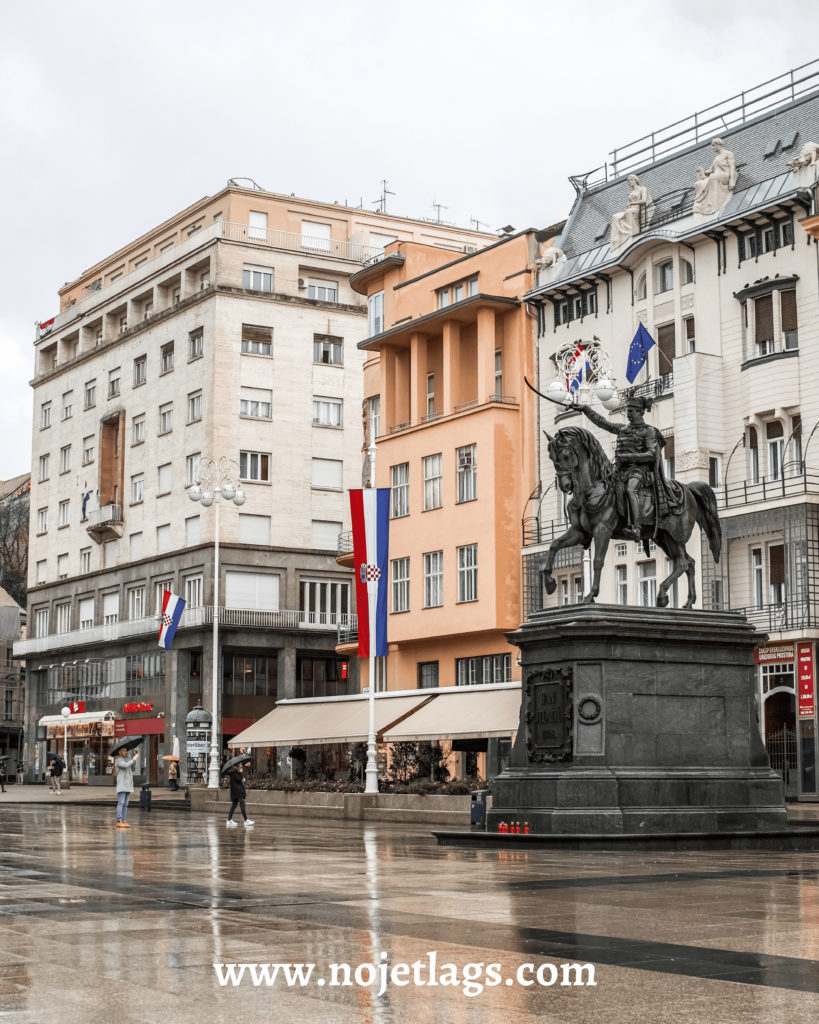
Ban Jelačić Square, located at the heart of Zagreb, Croatia, stands as the vibrant epicenter of the city’s cultural and social life. Named after Josip Jelačić, a prominent historical figure, the square is adorned with a monumental equestrian statue of the ban, a symbol of national pride and resilience. Lined with bustling shops, cafes, and historical buildings, the square exudes an energetic atmosphere, inviting both locals and visitors to immerse themselves in its dynamic charm.
Dolac Market
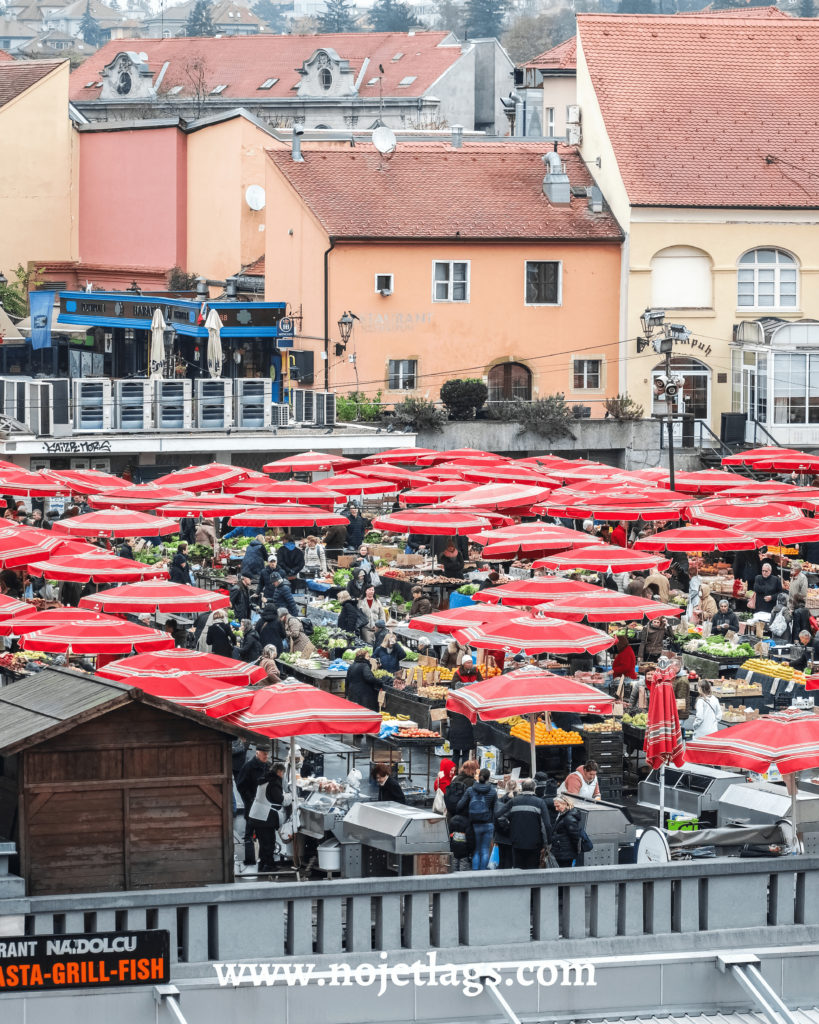
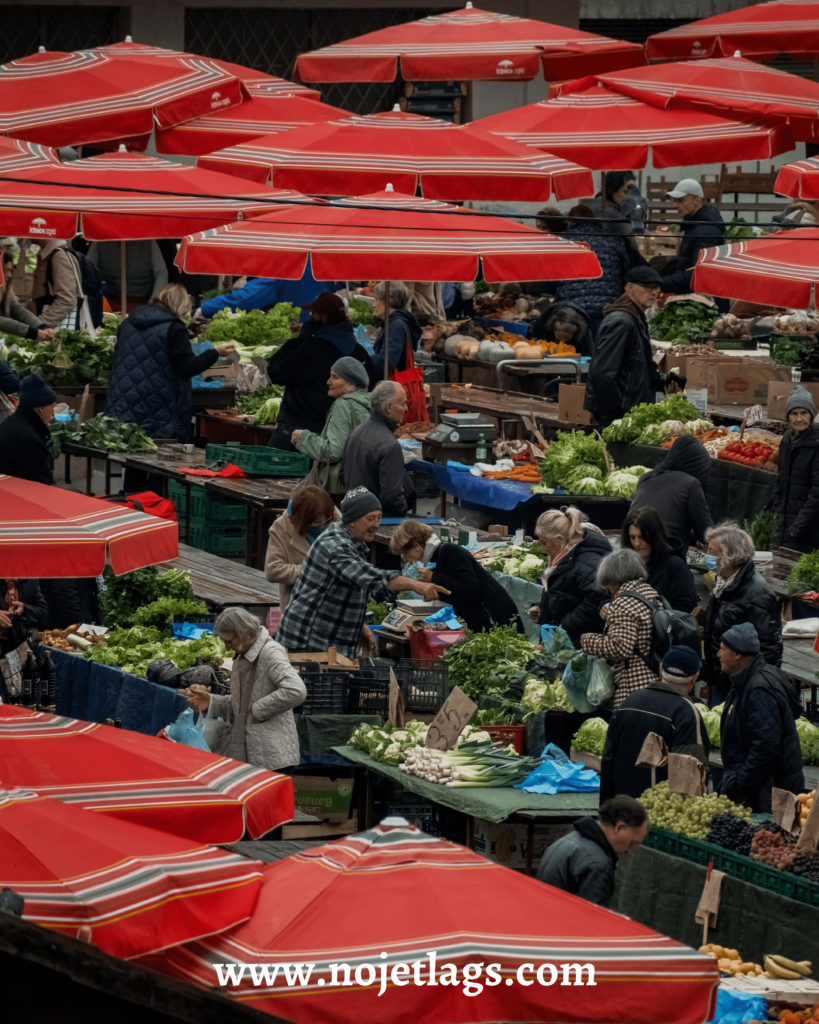
Dolac Market is a vibrant and bustling epicenter of culinary and cultural exchange. Located between the city’s Upper Town and Lower Town, this open-air market has been a cherished institution for generations. With its colorful array of fresh produce, local delicacies, and artisanal crafts, the Dolac Market presents a sensory feast that encapsulates the essence of Croatian gastronomy and heritage. Moreover, farmers and vendors proudly display their offerings, creating a lively tapestry of flavors and aromas. The iconic red umbrellas that dot the market’s landscape add a distinct charm, making it a beloved gathering place for locals and a must-visit destination for visitors.
Zagreb’s Cathedral
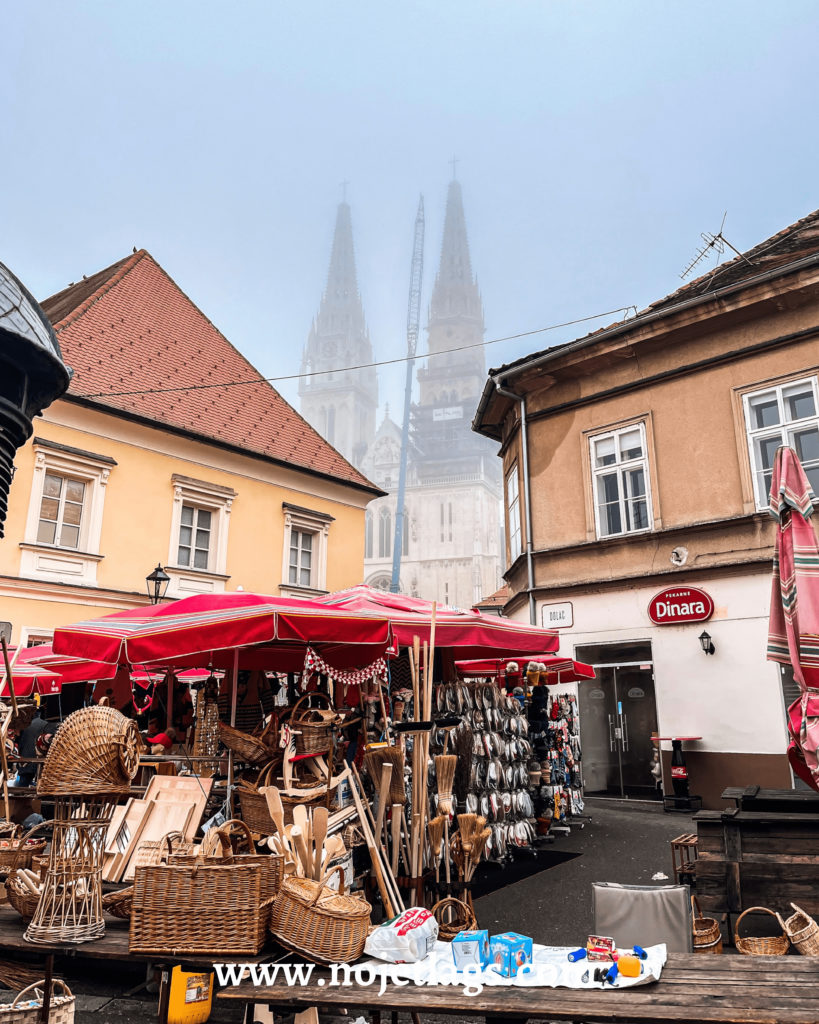
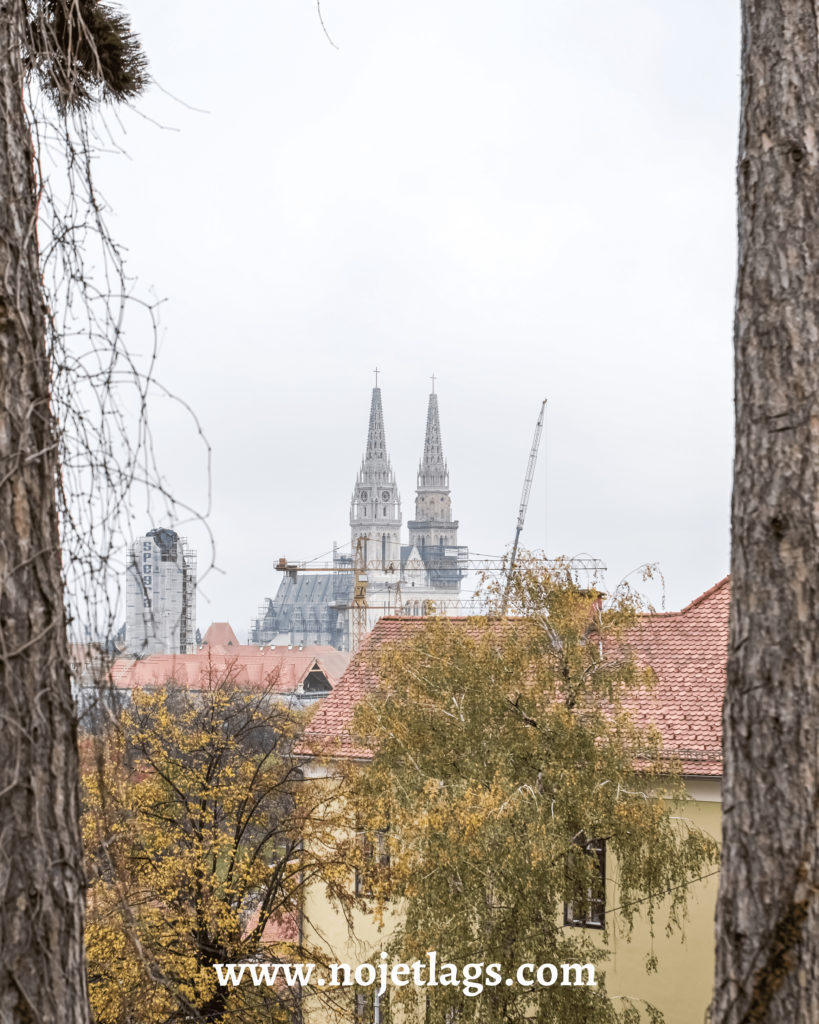
Zagreb Cathedral, also known as the Cathedral of the Assumption of the Blessed Virgin Mary, stands as a majestic and sacred landmark within the heart of the city. Its towering spires and intricate Gothic architecture command attention, serving as a symbol of faith and history.
St. Mary’s Church
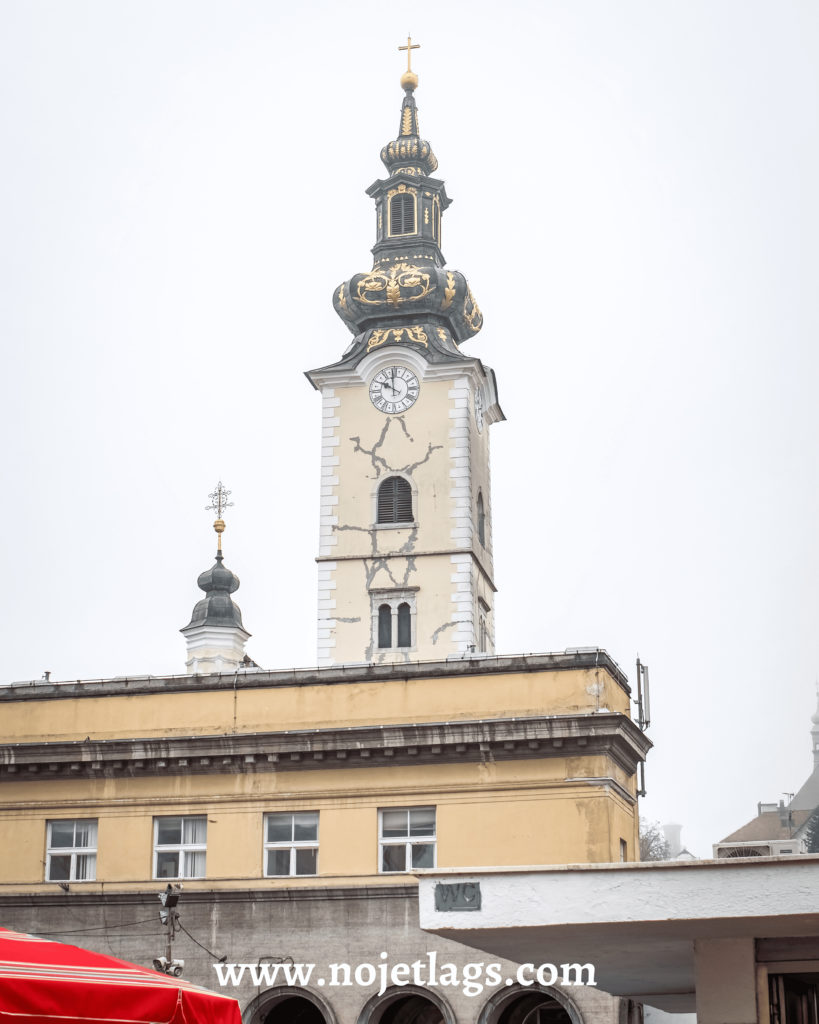
Zagreb’s St. Mary’s Church has a Gothic design and its iconic multi-colored tiled roof. The roof depicts the coats of arms of Croatia, Dalmatia, and Slavonia. Dating back to the 13th century, the church has withstood the test of time. More specifically, it has survived fires and renovations while preserving its historical significance.
Tunnel Gric
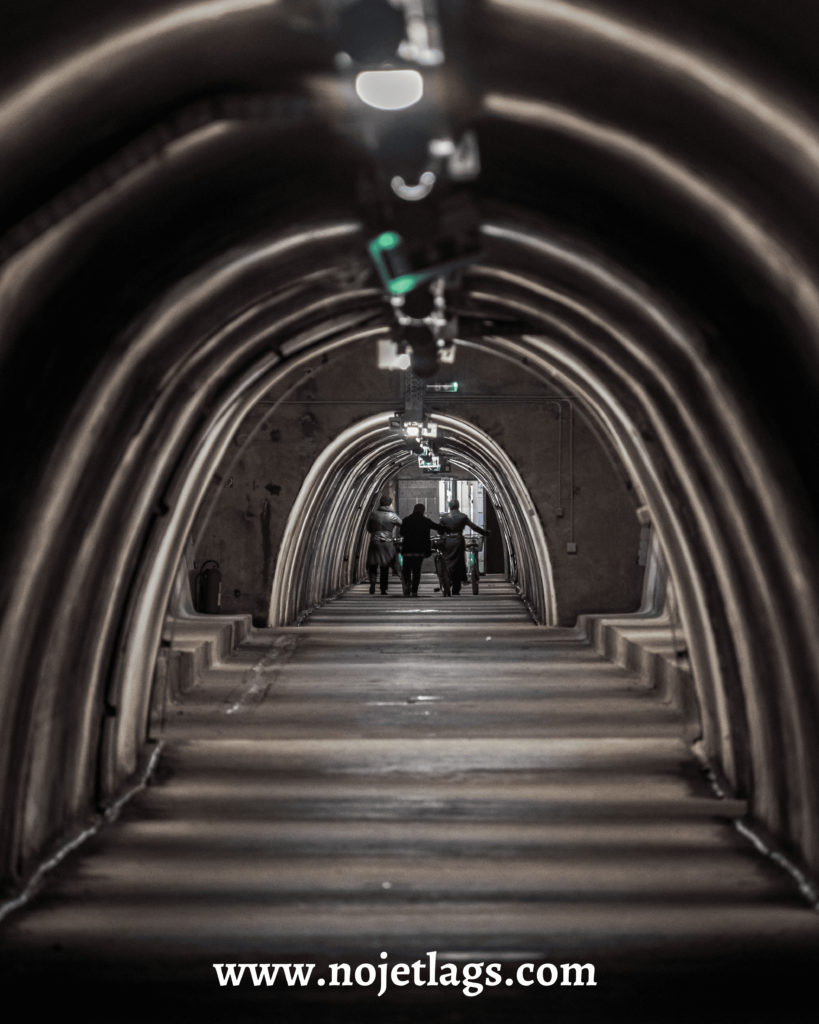
Zagreb’s Tunnel Grič, a subterranean passage with a unique historical narrative, provides a fascinating glimpse into the city’s past. It was constructed during World War II as a shelter from air raids. The tunnel remained largely forgotten until recent years when it was repurposed as a novel public space. Today, it serves as both an exhibition area and a convenient pedestrian route, connecting the Upper and Lower Towns.
Zrinjevac Park
Zrinjevac Park, a verdant oasis nestled within the heart of Zagreb’s Lower Town, offers a serene escape from the city’s urban hustle. This enchanting retreat, adorned with lush lawns, ornamental flower beds, and charming fountains, provides a sanctuary for relaxation and contemplation. Strolling along its tree-lined pathways, visitors encounter elegantly crafted pavilions and sculptures that reflect the park’s historical significance.
Zagreb Botanical Gardens
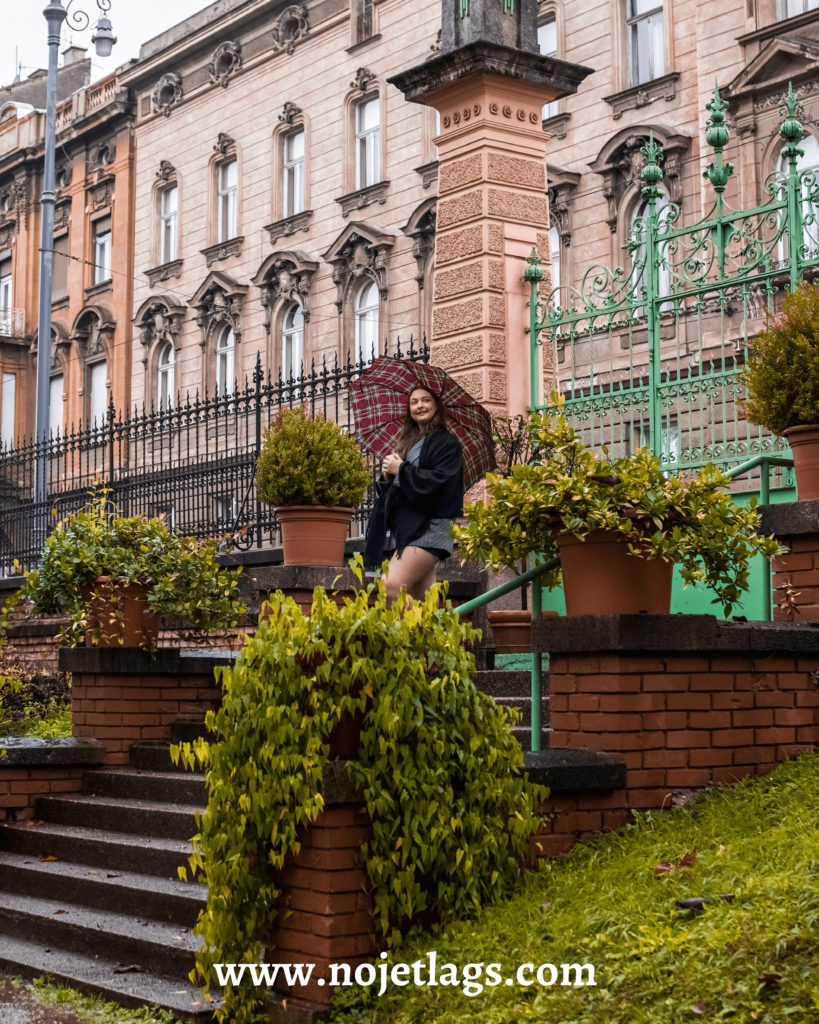
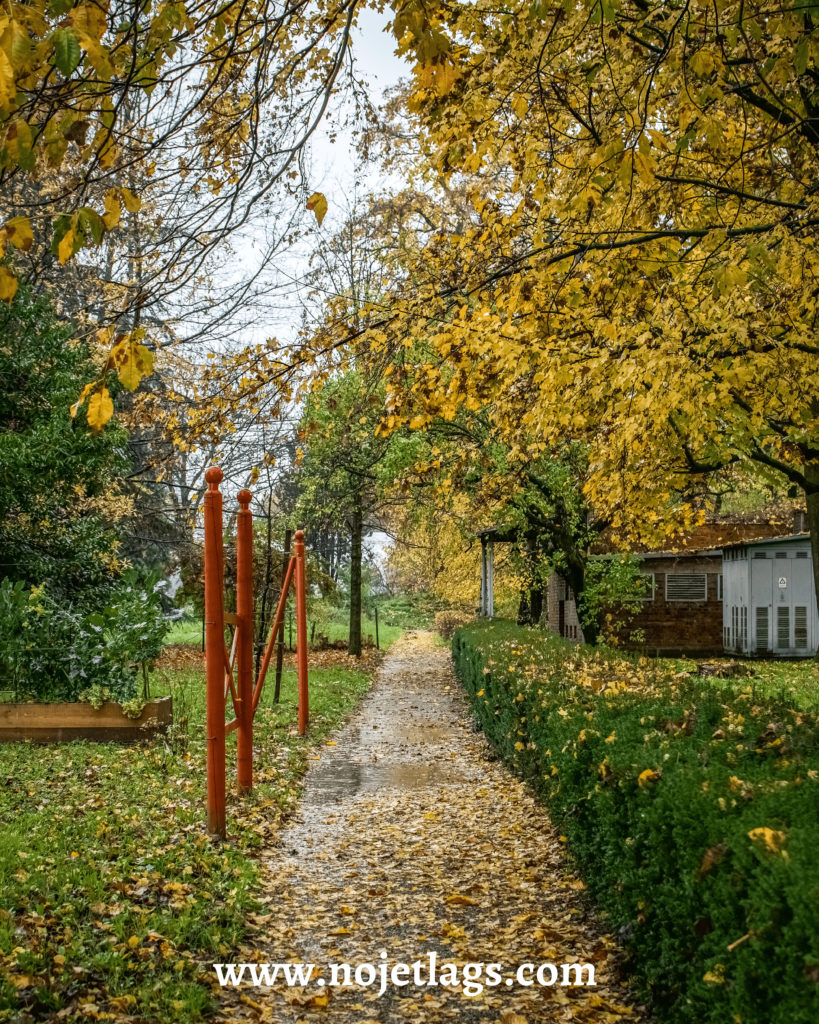
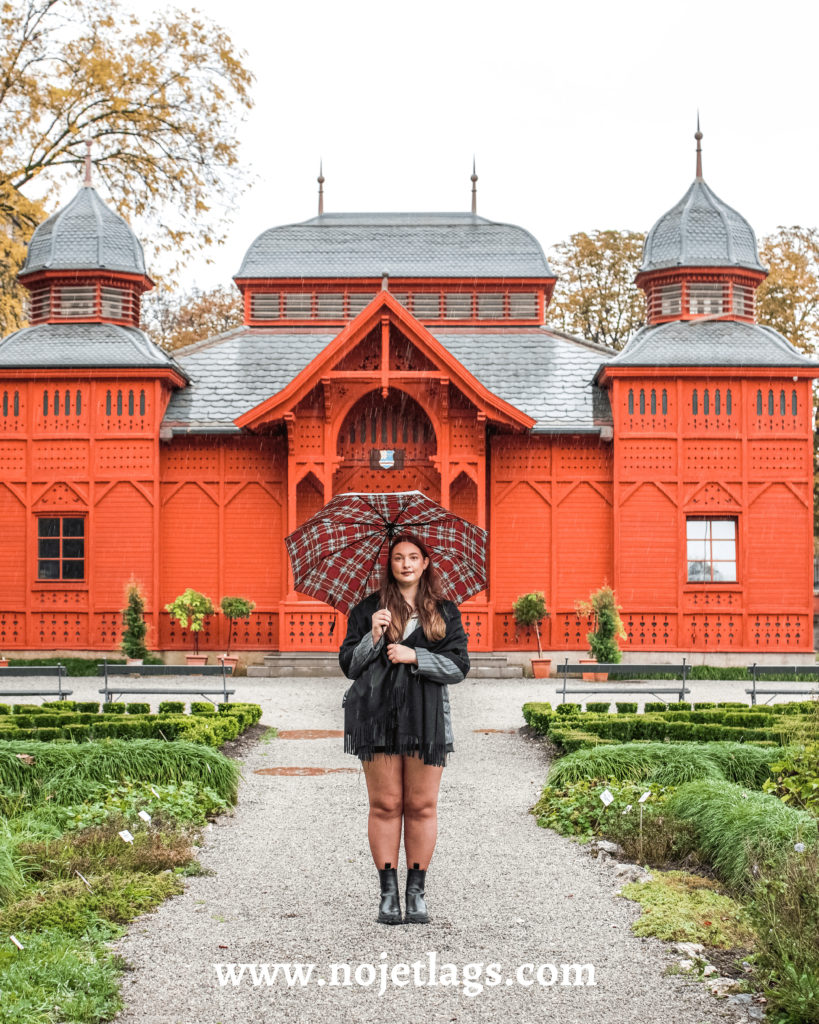
Zagreb’s Botanical Garden, invites visitors to embark on a captivating journey through diverse ecosystems and lush landscapes. Within the city’s heart, this green oasis showcases an impressive collection of plants from around the world.
King Tomislav Square
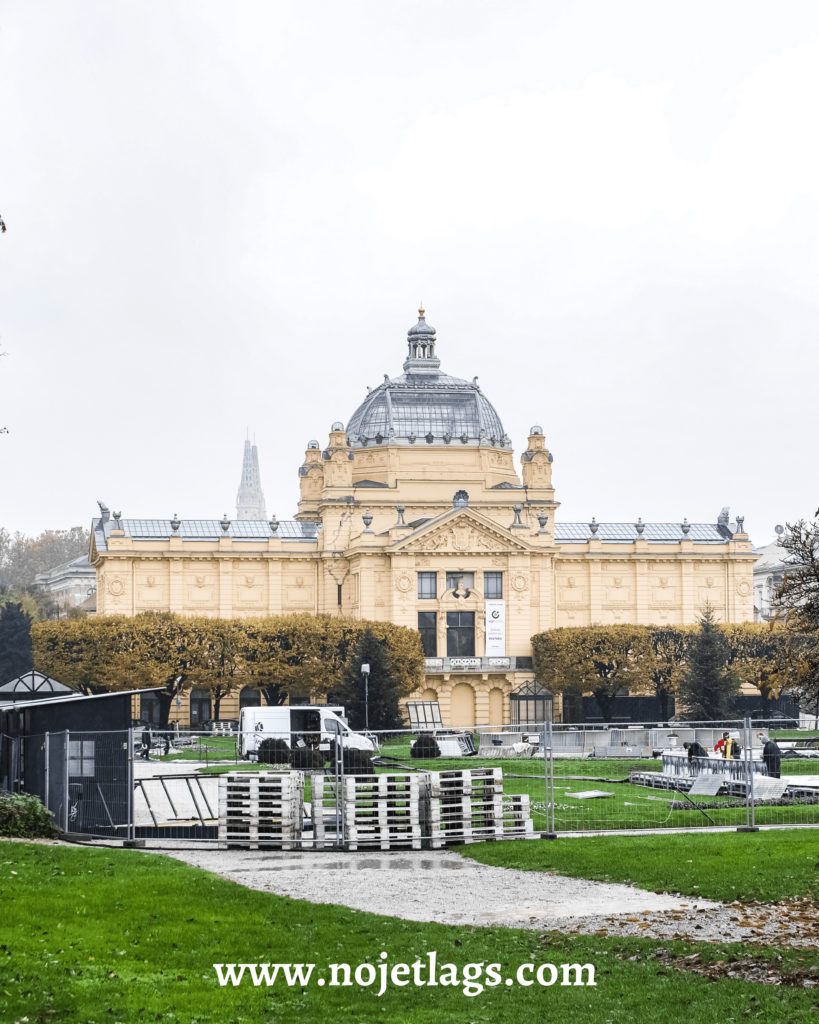
King Tomislav Square, a grand and monumental expanse, serves as a dignified gateway to the city’s historic core. Named after Croatia’s first king, this expansive square features the imposing equestrian statue of King Tomislav, a symbol of the nation’s historical legacy. The square’s elegant architecture, characterized by Neo-Renaissance and Secessionist influences, frames the splendid panorama of the Art Pavilion and the central railway station.
Zagreb’s Chocolate Museum






Zagreb’s Chocolate Museum is a delectable haven that whisks visitors into a world of cocoa-inspired enchantment. This museum invites chocoholics and curious minds to explore the rich history, artistry, and science behind one of the world’s most beloved treats. Through interactive exhibits, the museum unveils the journey from cocoa bean to chocolate bar. Whether indulging in tastings, crafting your confections, or admiring intricate chocolate sculptures, the museum sparks the imagination and the senses.
Where to stay in Zagreb?
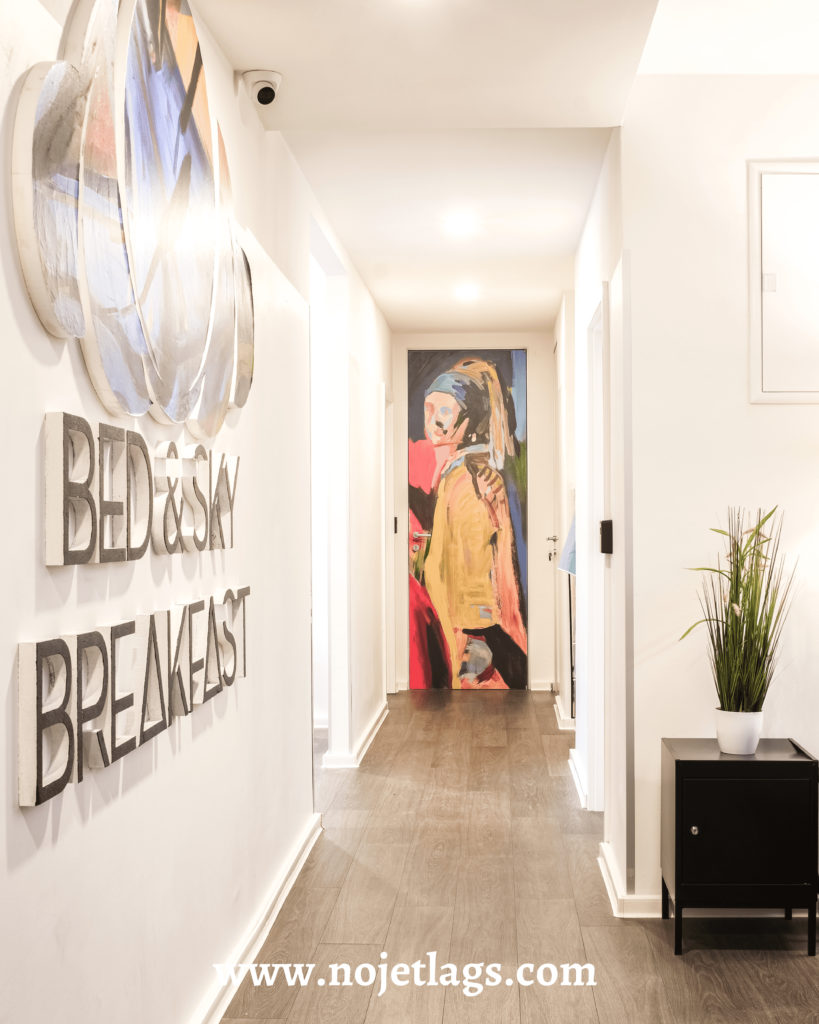

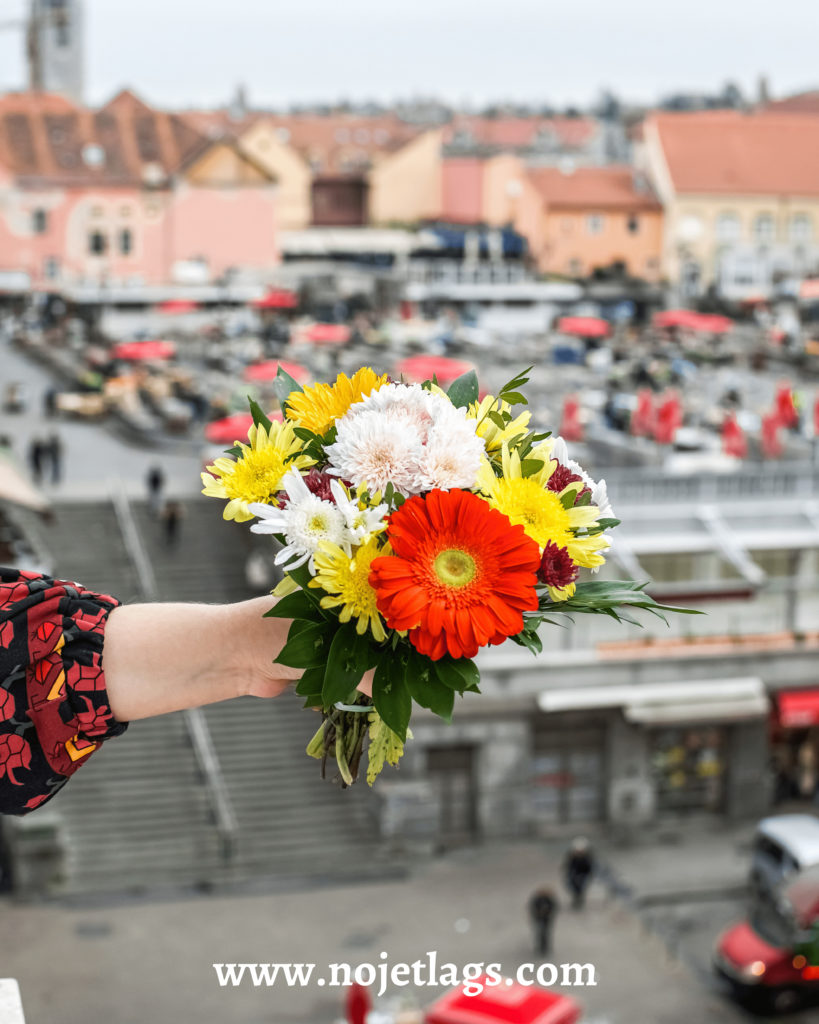
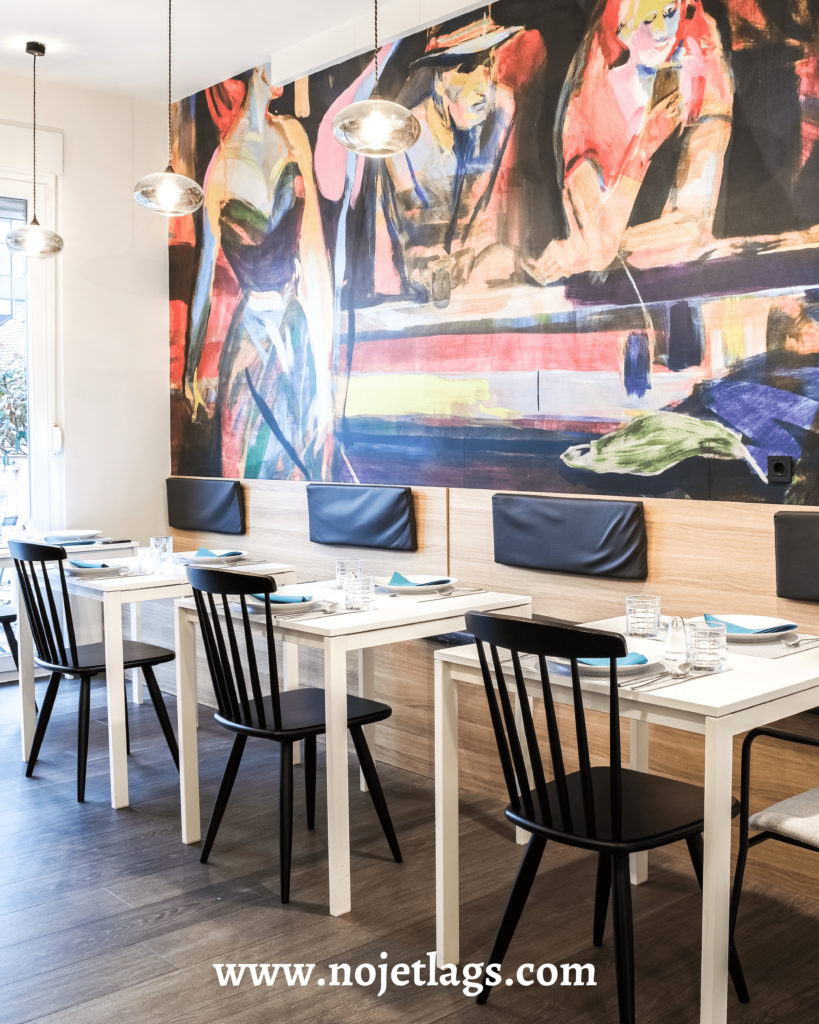
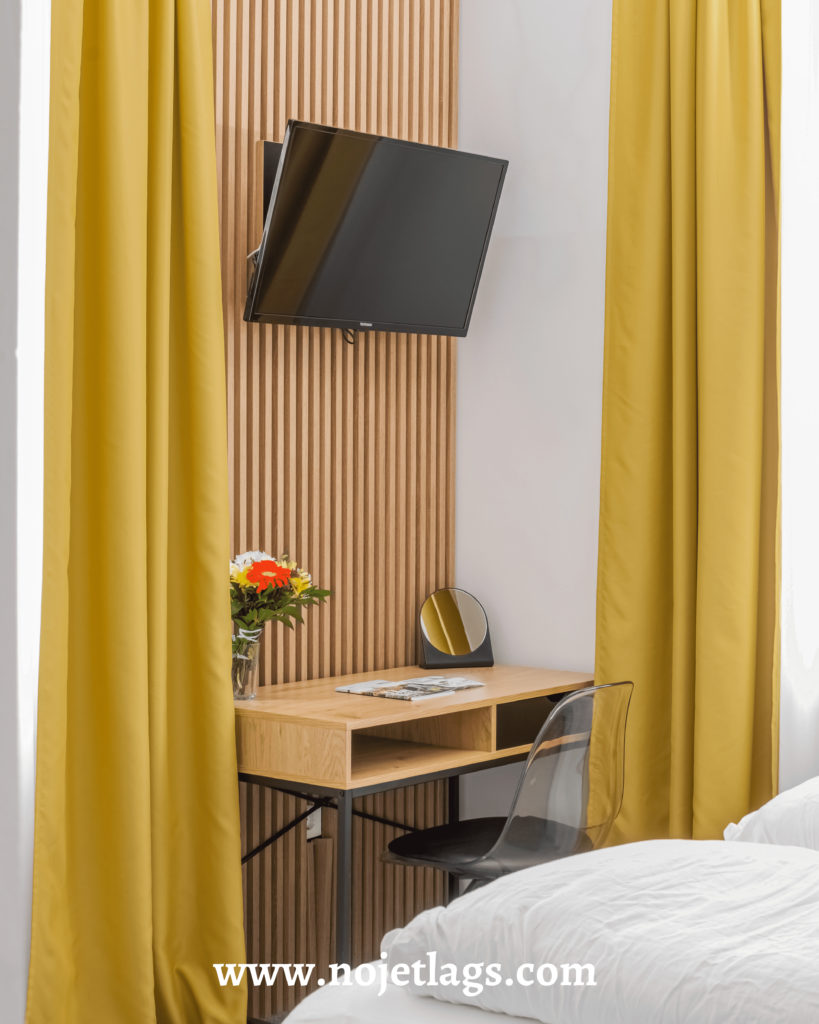
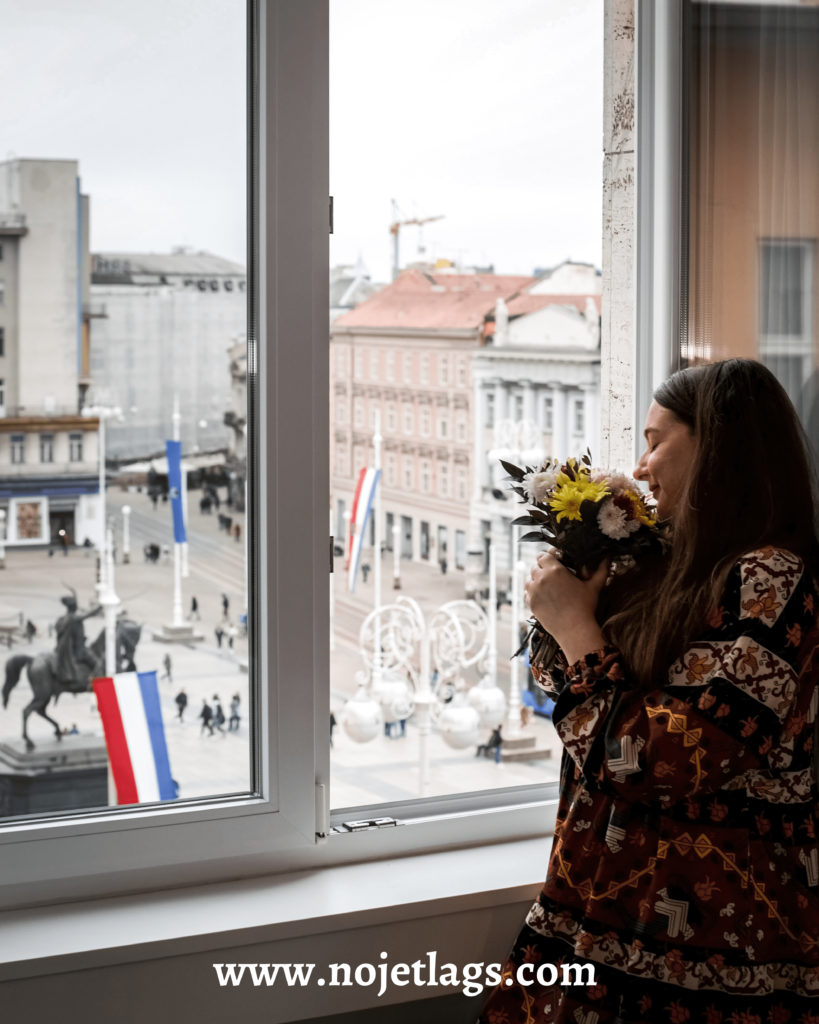
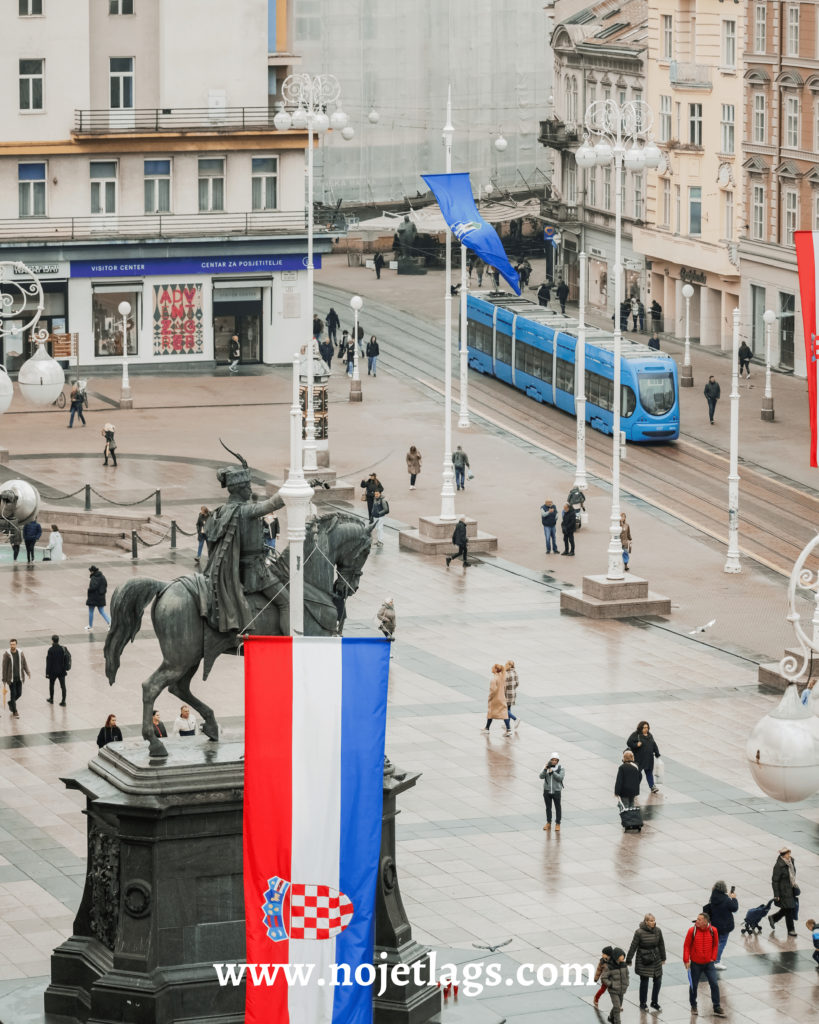
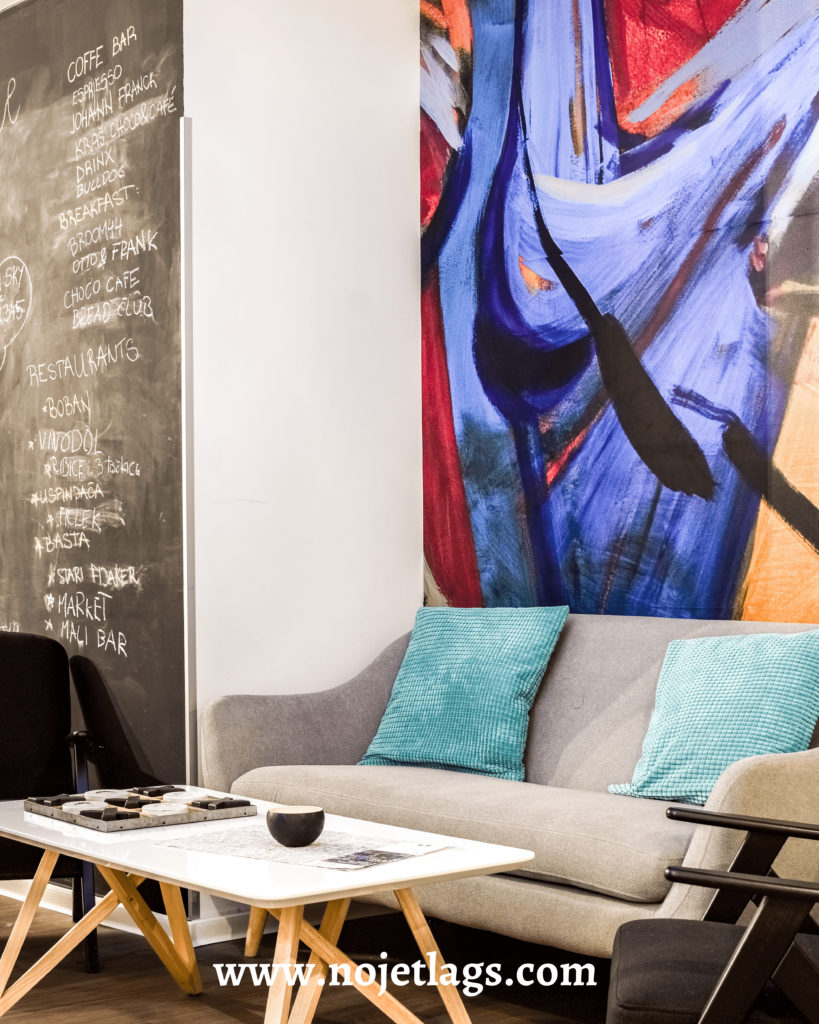
Bed & Breakfast Sky City Center ****
📍Located at Trg bana Josipa Jelačića 3, 3 kat, 10000, Zagreb, Croatia.
Some Useful Tips

Currency
The currency in Croatia is the Croatian Kuna, abbreviated as HRK. Currently, 1 Euro = 7.5349 Croatian Kuna.

Airport Transfer
To travel from Zagreb Airport to the city center, there are several transportation options available:
- Taxi: Taxis are readily available at the airport. The ride to the city center takes around 20-30 minutes, depending on traffic conditions. Make sure to use official taxi services and agree on the fare before starting the journey.
- Airport Shuttle: There are shuttle services that operate between the airport and the city center. These shuttles provide a convenient and cost-effective way to reach your destination.
- Public Bus: The local bus line 290 operates between the airport and the main bus station in the city center. This option is generally more budget-friendly, but it might take longer due to stops along the route.
- Car Rental: If you prefer to have more flexibility and independence, you can rent a car from the airport and drive to the city center.
- Uber: Uber operates in Zagreb, you can use the app to book a ride from the airport to the city center.

Transportation
Public transportation in Zagreb is generally efficient, affordable, and well-connected, making it a convenient way to get around the city. Here are some key aspects of public transportation in Zagreb:
- Trams: Trams are the backbone of public transportation in Zagreb. They cover a wide area of the city, including the city center and surrounding neighborhoods. Trams are frequent and provide a reliable mode of transportation.
- Buses: Buses complement the tram network, reaching areas that might not be accessible by tram. They are especially useful for connecting to more remote neighborhoods or areas with lower population density.
- Integrated Ticketing: Zagreb has an integrated ticketing system that covers trams, buses, and a few other forms of public transportation. This means you can use the same ticket for different modes of transport within a certain time frame.
- Fares and Tickets: Public transportation fares are relatively affordable. You can purchase tickets at kiosks, newsstands, and some trams or buses. There are various ticket options, including single rides, daily tickets, and multiple-ride cards.
- Coverage: Public transportation in Zagreb covers a vast area of the city and its suburbs. It’s a convenient way to explore the city’s attractions, neighborhoods, and cultural sites.
- Frequency: Trams and buses usually have frequent schedules, especially during peak hours. This makes it easy to hop on and off as needed.
- Clean and Safe: Zagreb’s public transportation system is generally clean, well-maintained, and safe for travelers. However, it’s always advisable to keep an eye on your belongings and be aware of your surroundings.
- Information: Timetables, routes, and other information about public transportation are available at stops, online, and through various mobile apps.
Overall, Zagreb’s public transportation system offers a convenient and budget-friendly way to navigate the city.

Budget
Visiting Zagreb as a tourist can be relatively affordable compared to many other European capitals. The city offers a range of attractions, dining options, and activities that cater to various budgets. Here are some factors to consider:
- Accommodation: Accommodation costs can vary depending on the type of lodging you choose. Budget travelers can find affordable hostels and guesthouses, while mid-range and luxury hotels offer additional amenities at higher prices. Booking in advance and considering alternatives like Airbnb can help you find suitable options within your budget.
- Food: Dining out in Zagreb is generally more affordable than in many other European cities. There are plenty of budget-friendly eateries, street food vendors, and local markets where you can enjoy delicious meals.
- Attractions: Many of Zagreb’s attractions, including parks, public squares, and some museums, have free or reasonably priced entry. This makes it possible to explore the city’s culture and history without incurring significant expenses.
- Public Transportation: Zagreb’s public transportation system is affordable and convenient, making it easy to get around the city.
- Entertainment: The cost of entertainment, such as going to the cinema, attending concerts, or enjoying cultural performances, is generally reasonable.
- Shopping: Souvenirs, local products, and traditional crafts can be found at various price points, allowing you to find items that fit your budget.
- Tours and Activities: Guided tours and organized activities may have associated costs, but there are also plenty of self-guided options to explore the city’s attractions independently.
Overall, with careful planning and budget-conscious choices, it’s possible to enjoy a fulfilling and enriching experience as a tourist in Zagreb without spending an excessive amount of money. As always, it’s a good idea to research and plan your trip ahead of time to make the most of your budget and enjoy all that the city has to offer.

Safety
Zagreb is generally considered a safe city for tourists. The crime rate in Zagreb is relatively low compared to other European capitals, and violent crime is rare. However, like in any city, it’s always important for tourists to exercise common-sense precautions to ensure their safety and well-being.
